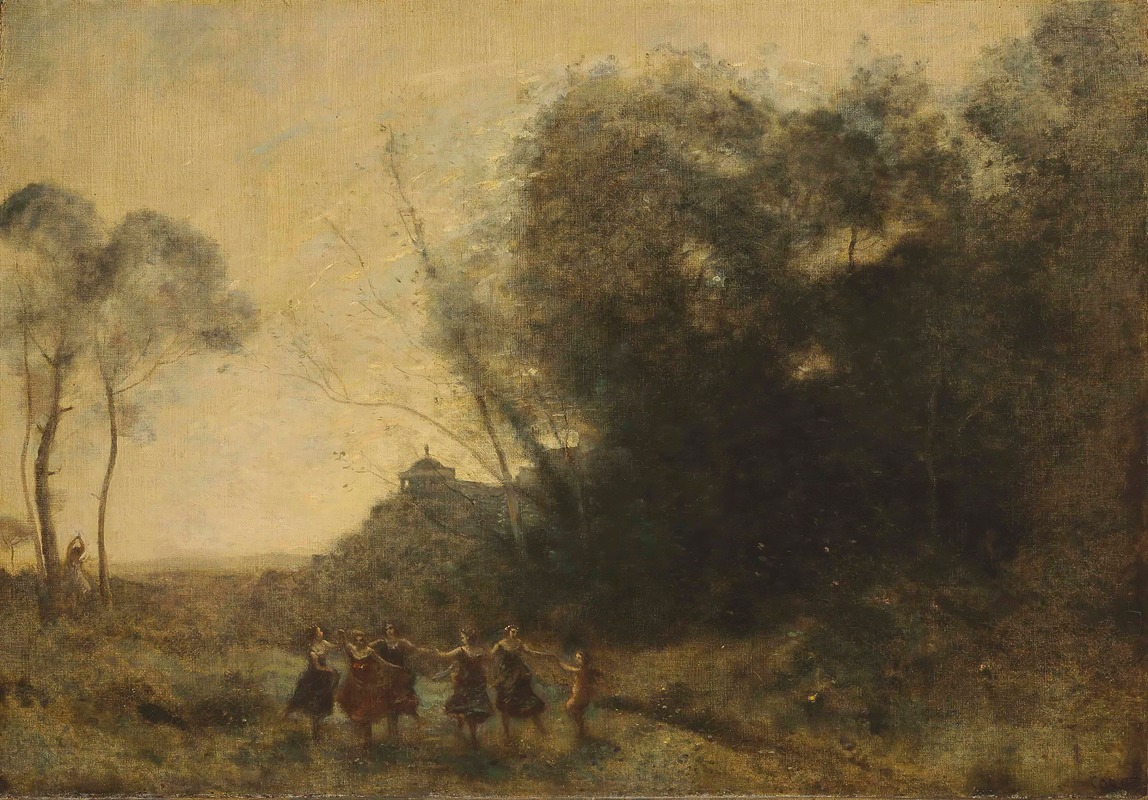
Ronde De Nymphes
A hand-painted replica of Jean-Baptiste-Camille Corot’s masterpiece Ronde De Nymphes, meticulously crafted by professional artists to capture the true essence of the original. Each piece is created with museum-quality canvas and rare mineral pigments, carefully painted by experienced artists with delicate brushstrokes and rich, layered colors to perfectly recreate the texture of the original artwork. Unlike machine-printed reproductions, this hand-painted version brings the painting to life, infused with the artist’s emotions and skill in every stroke. Whether for personal collection or home decoration, it instantly elevates the artistic atmosphere of any space.
Jean-Baptiste-Camille Corot's Ronde de Nymphes (translated as "Dance of the Nymphs") is a notable painting by the French artist, who is widely regarded as a pivotal figure in 19th-century landscape painting. Corot, active during the transition between Neoclassicism and Impressionism, is celebrated for his ability to blend naturalistic detail with poetic and atmospheric qualities. Ronde de Nymphes exemplifies his mastery in creating dreamlike scenes that merge mythological themes with serene landscapes.
The painting depicts a group of nymphs dancing in a wooded glade, bathed in soft, diffused light. Corot's use of light and shadow creates a luminous, almost ethereal atmosphere, which is characteristic of his mature works. The figures of the nymphs are delicately rendered, their graceful forms harmonizing with the surrounding trees and foliage. This interplay between the human and natural elements reflects Corot's ability to evoke a sense of tranquility and timelessness.
Ronde de Nymphes is often associated with Corot's later period, during which he increasingly incorporated mythological and allegorical subjects into his landscapes. While Corot is best known for his plein air studies and realistic depictions of nature, his more imaginative works, such as this one, reveal his interest in blending reality with fantasy. The painting's composition, with its carefully arranged figures and balanced use of light, demonstrates Corot's deep understanding of classical artistic principles, while its dreamlike quality hints at the Romantic influences of his time.
The exact date of the painting is not definitively documented, but it is believed to have been created in the mid-to-late 19th century, during the height of Corot's career. The work reflects the artist's fascination with the interplay of light and atmosphere, as well as his ability to convey a sense of poetic reverie. The nymphs, drawn from classical mythology, serve as a recurring motif in Corot's oeuvre, symbolizing an idealized connection between humanity and nature.
Today, Ronde de Nymphes is recognized as one of Corot's significant contributions to the development of landscape painting. It is housed in the Musée d'Orsay in Paris, France, which holds an extensive collection of 19th-century art. The painting continues to be admired for its technical skill, its evocative mood, and its ability to transport viewers into a serene, otherworldly realm.
Corot's influence on later artists, including the Impressionists, is well-documented, and works like Ronde de Nymphes highlight his role as a bridge between traditional and modern approaches to art. The painting remains a testament to Corot's unique vision and his enduring legacy in the history of Western art.


















